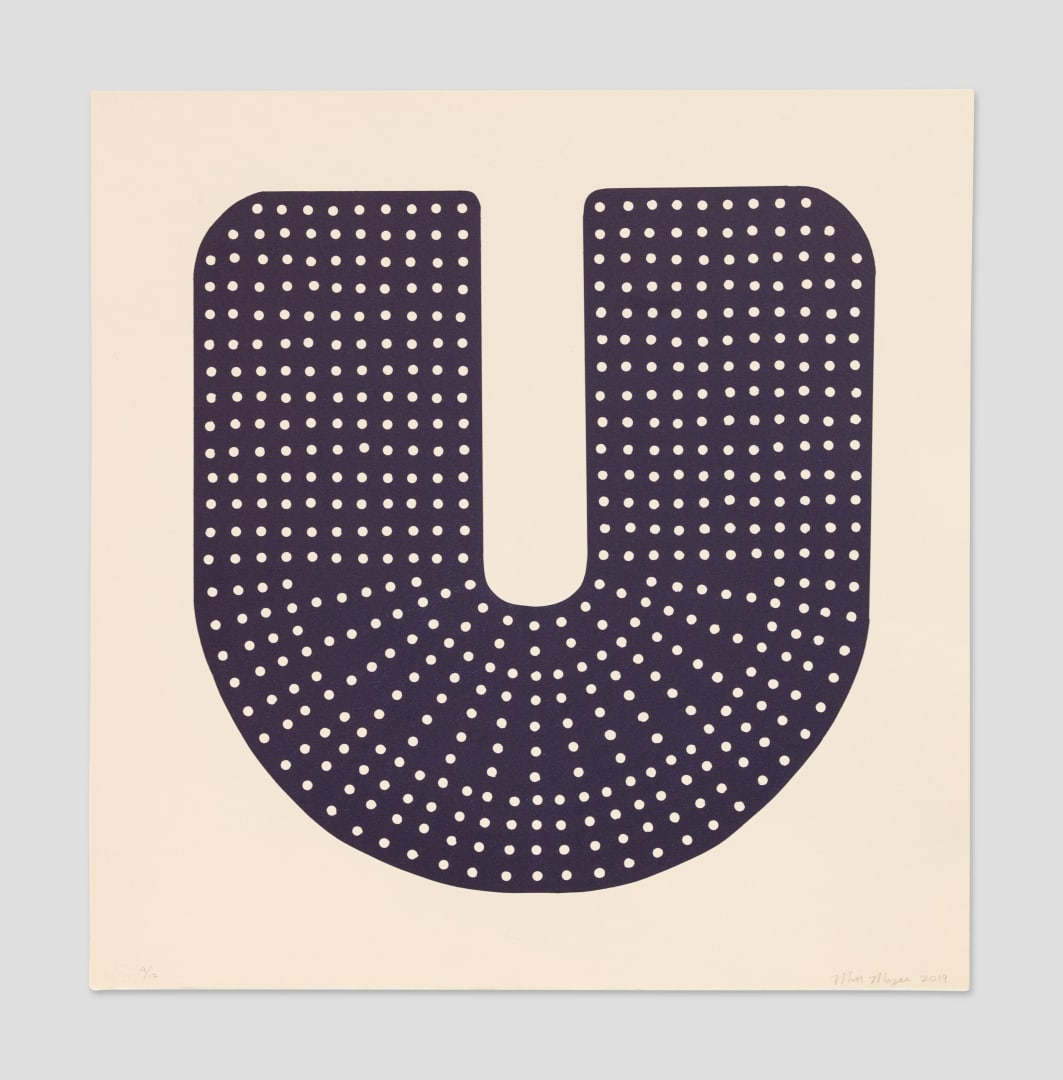It’s no secret that Zane Bennett Print Curator Kylee Aragon Wallis has great love for contemporary artist Matt Magee’s works on paper. Since Magee’s first residency (he’s completed two) at New Mexico’s premiere Tamarind Institute, Aragon Wallis has admired the experimental yet refined nature of Magee’s ever-evolving career. She says, “I might have actually jumped for joy when Fragment Flag and Green Excavation arrived at the gallery!” Moments later, Magee was a firm favorite amongst the full staff. Read on for Aragon Wallis's interview with Magee, whose work appears in the gallery's Match: Printmaking display.
Matt Magee is an American contemporary artist who is best known for his minimal abstract geometric paintings, sculptures, prints, assemblages, murals and photographs. Over a career spanning more than four decades, Magee has experimented widely with abstract and conceptual art practices that are informed by the artist's personal history, numerology, and language.
Magee was the 2017 Arlene and Mort Scult Award winner, the 2007 Josef and Anni Albers Foundation resident fellow, and winner of the Board of Trustees Award from the Silvermine Arts Center. He was also a 1991 Pollock-Krasner Foundation Grant recipient. He holds an MFA from Pratt Institute and a BA in Art History from Trinity University. His work has been exhibited worldwide.
Kylee Aragon Wallis: What does Fragment Flag mean to you? Is this the first time you have used the flag as a source of inspiration?
Matt Magee: Fragment Flag was an entry to the 4th of July competition in July 2019 hosted by Planthouse Gallery. The image and concept won the competition and resulted in my being offered a solo show with Planthouse in NYC in October 2019. The image was then produced and printed as a screen print by Lower Eastside Printshop and published by Planthouse. It was the first time I've used the flag as a source of inspiration. As an image it speaks to the divisive speech, divisive tweets, divided families, divided migrant families, fragmented politics and political parties so prevalent these days...and now with the COVID-19 pandemic a further dissolution and breakdown of culture and society.
KAW: What are you doing to keep sane during quarantine?
MM: I'm in the studio working 7 to 8 hours a day, seven days a week with my door locked, which is my normal. Long walks every morning followed by yoga begin each day. The absolute quiet outside makes for a renewed centering and focus. The air has been beautiful because of the low emissions and one can see far into the distance here in the desert, which is inspiring.
KAW: When did you start to dabble in prints?
MM: In 2010 I created a microsoft word document consisting of a paragraph of lowercase letter j's, typed in rows, and based on the signature of my friend Josh Pazda, as he signed off on his emails. I presented the document on 8.5 x 11-inch paper in an un-numbered edition of 100, and gave it away as gifts to friends. The image references Carl Andre's typewriter poems from the 1960s and also the repetition and schema of an Agnes Martin painting. I titled the work rose of jays and used rose pink ink to play on the word "rows" and also typed the title into the lower left of the sheet.
In 2011 I showed the image to Leslie Miller at the Grenfell Press in Manhattan and she suggested we create a polymer plate of backwards lowercase j's to produce a relief print. She had beautiful Crown and Sceptre paper from the 1920s in her archive, bought from a sale at the Morgan Library, and her master printer Brad Ewing printed on that. Subsequently, the Museum of Fine Arts, Houston acquired an impression for their permanent collection and Jasper Johns also owns an impression from the edition. Since then, I've done about 43 different editions across the globe.
KAW: Who are your favorite artists, or who do you look to for inspiration?
MM: I like Ellsworth Kelly's work, most specifically I respond to the drama and sharpness of his edges and how he uses space. I've also referenced the greens he uses in my print Green Excavation, 2020, produced with Woolworth Publications. I also draw from Myron Stout's graphite drawings and iconographic paintings on canvas, and the small idiosyncratic, dreamlike paintings of Forrest Bess. And of course, Agnes Martin's grid paintings, drawings and prints.


